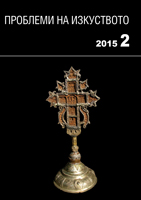Отново за резбования кръст от църквата „Св. Димитър” в Свищов
Once Again on the Cross from St. Demetrius Church in Svishtov
Author(s): Margarita KujumdjievaSubject(s): History, Archaeology, Fine Arts / Performing Arts, Cultural history, History of Church(es), Visual Arts, Modern Age, Theology and Religion, 17th Century, Eastern Orthodoxy
Published by: Институт за изследване на изкуствата, Българска академия на науките
Summary/Abstract: In Bulgarian literature by far this artefact was regarded as a donation of the Wallachian Prince Matei Basarab to the Holy Monastery of Iviron on Mount Athos, which is an assumption made upon an incorrect reading of the donor’s inscription. Located on the handle of the cross, the Cyrillic inscription clearly states that the cross was commissioned by the grand treasurer Stroe and his wife Vişa and was given to the Vieroş monastery in 1642 during the days of Matei Basarab. The grand treasurer Stroe was the eminent member of the Leurdeanu Boyar family and one of the most intriguing figures on the Wallachian political stage in 17th century. During his marriage to Vişa and while he was serving as a grand treasurer, Stroe Leurdeanu made do- nations for the subsistence of certain churches and monasteries related to his wife’s family. The donor inscription on the cross commissioned precisely for Vieroş monastery is the earliest evidence for Stroe’s support of this holy place. Apart from the survey on Stroe’s cross in Bulgarian and Romanian historiography, the article deals with its present day condition, possible initial function, technical and stylistic characteristics. The wooden part of the Stroe’s cross is a work of high skilled Athonite master. The closest parallel is an identical cross which has the same proportions, technical features, and similar program and iconographical details, that is today in the collection of the state Hermitage museum. In comparison to the woodcarving, the metal cover is not of the same exquisite quality and looks heterogeneous. The frame on the face and the reverse of the cross is strongly worn out and its original look was lost as a result of the sub- sequent interventions, but the part of the mount connecting the handle with the base of the cross provides opportunities for attribution evoking associations with the production of Aegean Macedonia’s craftsmen, influenced by the Greek ateliers in the capital, who were skilful to weave motifs of the Ottoman art of the time into their works. The carving was undoubtedly made by a Greek master and we can find Greek influence on its cover. These characteristics of the object are indicative of Stroe Leurdeanu’s high rank, range of contacts and preferences.
Journal: Проблеми на изкуството
- Issue Year: 2015
- Issue No: 2
- Page Range: 3-7
- Page Count: 5
- Language: Bulgarian
- Content File-PDF

